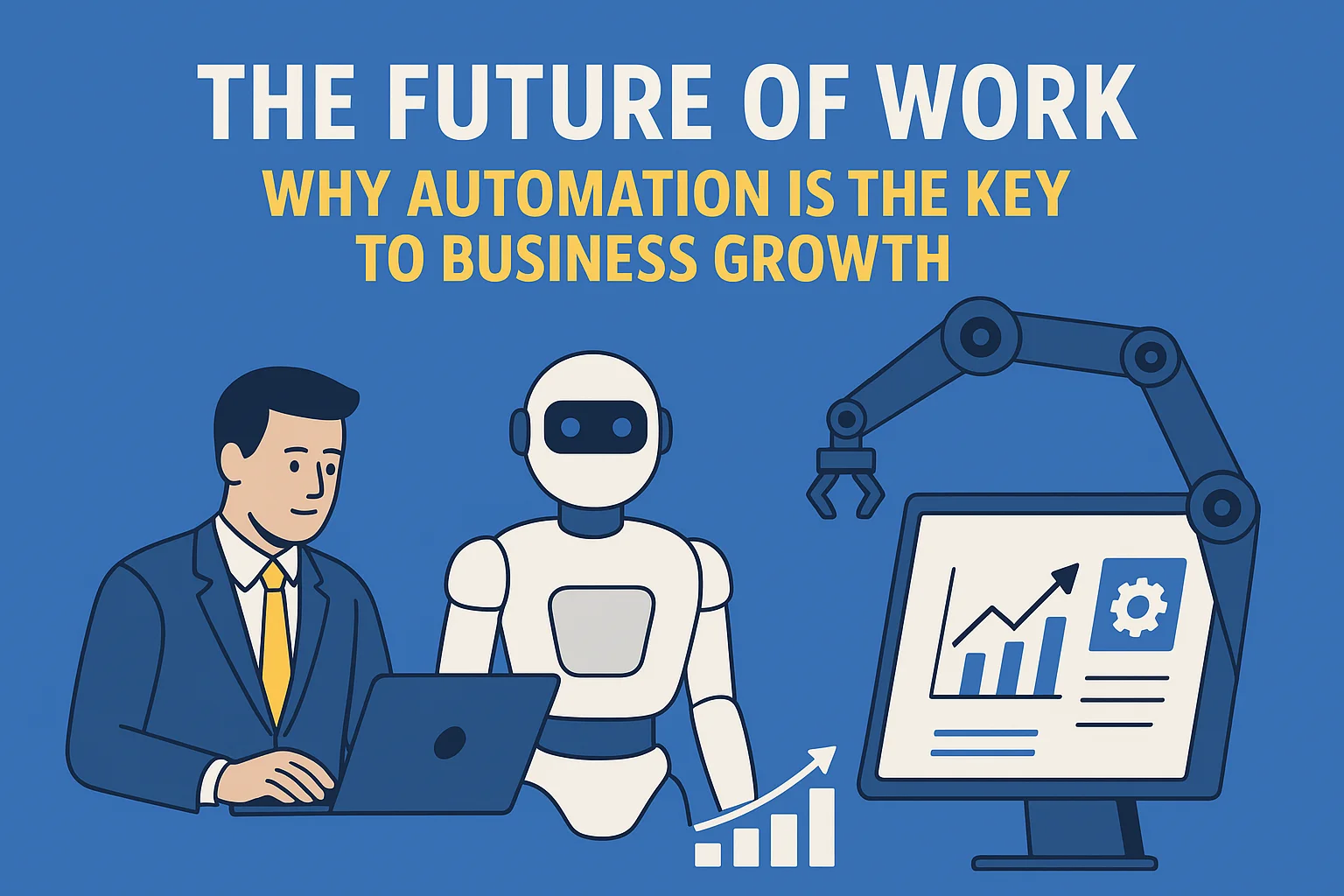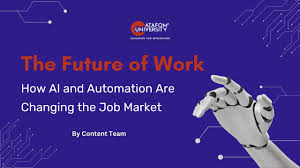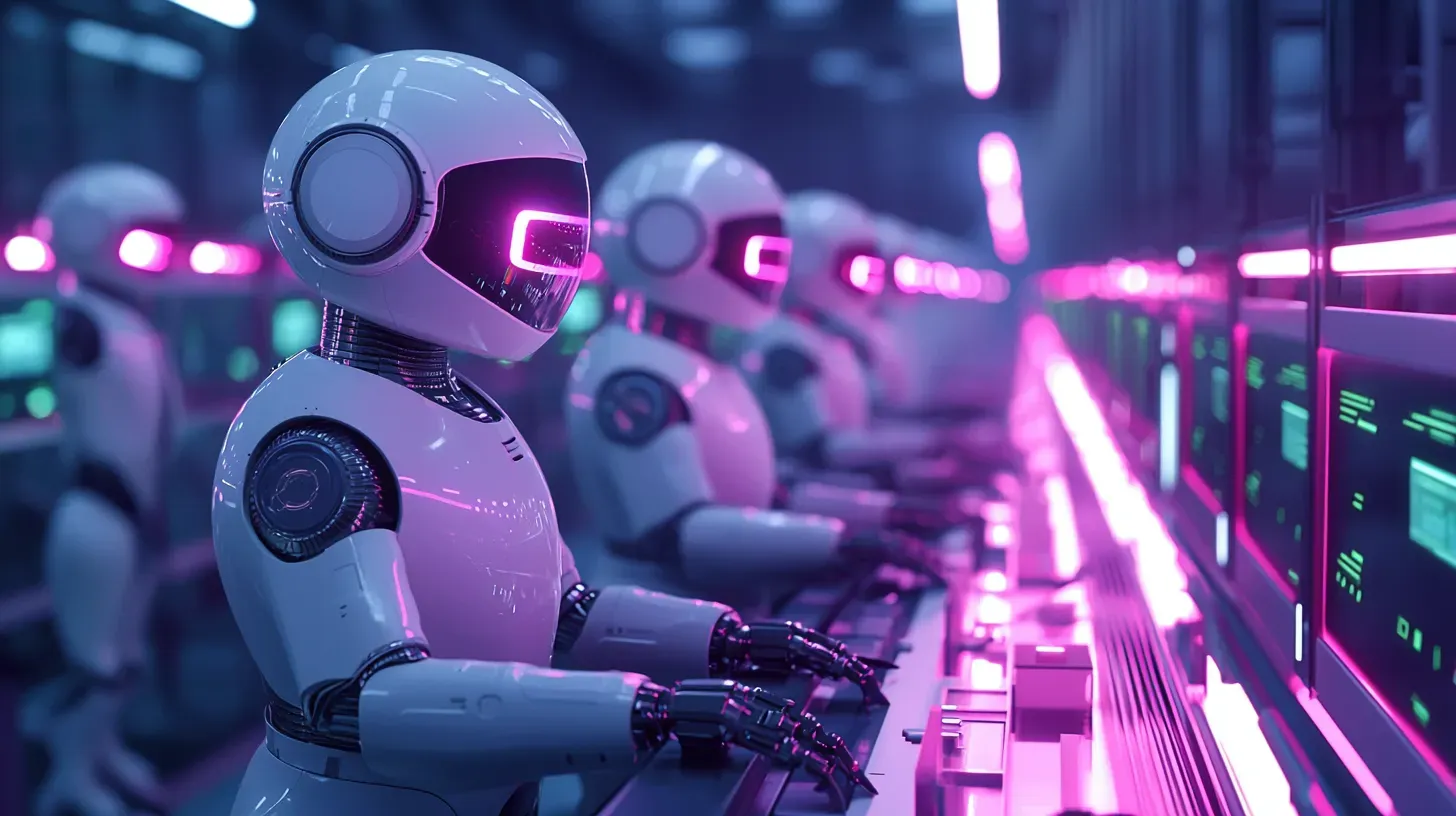
Introduction
Automation is reshaping industries, businesses, and everyday life. From artificial intelligence (AI) to robotic process automation (RPA) and smart machines, automation is revolutionizing the way we work and live. Companies worldwide are adopting automation to improve efficiency, reduce costs, and enhance productivity. With the rise of Industry 4.0, automation is no longer a luxury — it is a necessity for growth and innovation.
In this article, we will explore what automation is, its types, benefits, challenges, and the future it holds in shaping the digital economy.

What is Automation?
Automation refers to the use of technology, software, and machines to perform tasks with minimal human intervention. It is designed to handle repetitive, manual, or complex processes more efficiently. Automation can be applied in manufacturing, IT services, healthcare, finance, logistics, and almost every industry.
High-ranking keywords included: automation, industrial automation, robotic process automation, and artificial intelligence.
Types of Automation
1. Industrial Automation
Industrial automation uses machines, robots, and sensors to control production lines. It is common in manufacturing, automotive, and energy sectors.
2. Robotic Process Automation (RPA)
RPA automates repetitive office tasks such as data entry, reporting, and customer service using software robots.
3. IT Automation
IT automation manages cloud systems, networks, and cybersecurity tasks, reducing errors and improving speed.
4. Business Process Automation (BPA)
BPA streamlines workflows like invoicing, HR management, and supply chain operations.
5. Home Automation
Smart devices such as voice assistants, security systems, and IoT-enabled gadgets bring automation into everyday life.
Benefits of Automation
-
Increased Productivity – Machines work faster and without breaks.
-
Cost Reduction – Businesses save money on manual labor and errors.
-
Consistency & Accuracy – Automation reduces human error.
-
Enhanced Safety – Dangerous tasks can be handled by robots.
-
Better Customer Experience – Chatbots and AI improve service quality.
Challenges of Automation
-
Job Displacement – Some roles are replaced by machines.
-
High Implementation Cost – Initial investment is expensive.
-
Cybersecurity Risks – Automated systems can be targets for hackers.
-
Skill Gap – Workers need to learn new digital skills.
Automation Across Industries
-
Healthcare – AI-powered diagnostics, robotic surgery, and smart monitoring.
-
Finance – Automated trading, fraud detection, and digital banking.
-
Retail – Smart checkout systems, inventory management, and chatbots.
-
Transportation – Self-driving cars, drones, and automated logistics.
-
Education – AI tutors, online learning platforms, and grading automation.

Future of Automation
The future of automation is driven by AI, machine learning, IoT, and robotics. With the rise of smart factories, autonomous vehicles, and digital assistants, automation will continue to shape industries. According to experts, automation will create new jobs while transforming old ones, making digital skills essential for future workers.
As green technology and sustainable automation emerge, businesses will also focus on energy efficiency and eco-friendly innovation.
Conclusion
Automation is not just about replacing human effort; it is about empowering industries, businesses, and individuals to achieve more in less time. With the integration of AI, robotics, and smart systems, automation will continue to redefine the future of work and technology.